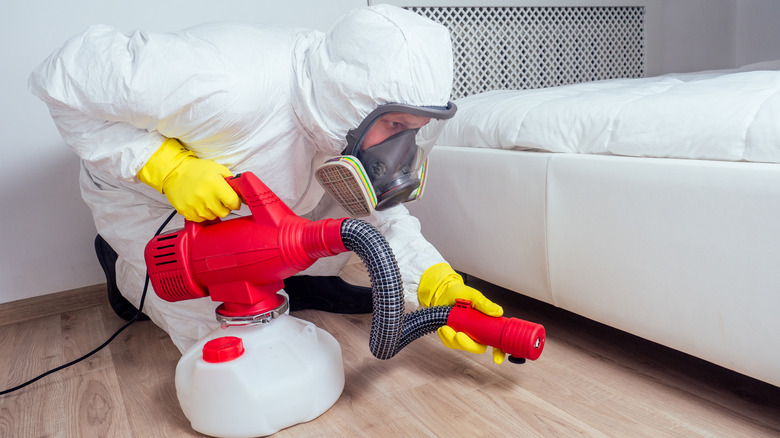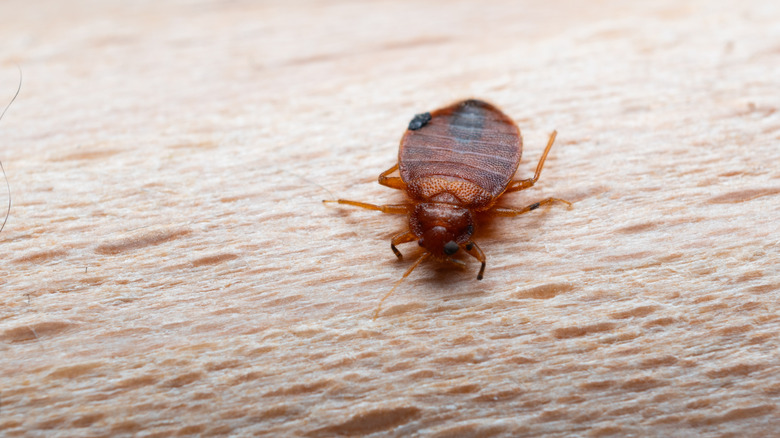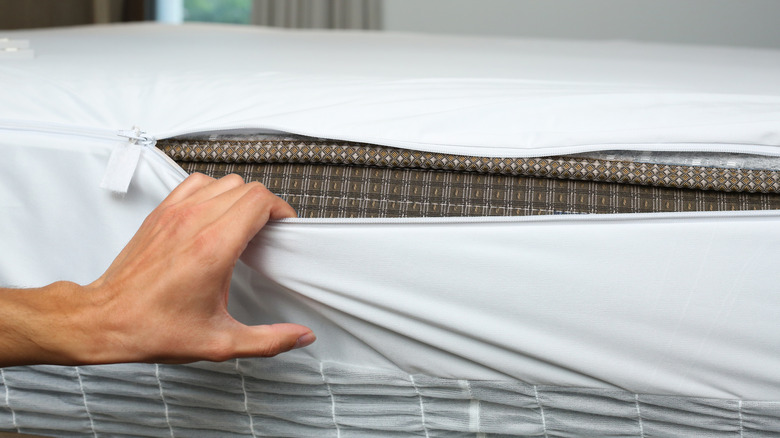The Most Bed Bug-Infested Areas In The Country (And How To Prevent Them In Your Home)
Although there are several mistakes everyone makes when dealing with bed bugs, one potential slip-up might be something you don't think about — not being careful enough in the cities you're visiting. Terminix created a recent report that lists the 50 American cities that have the biggest problems with bed bug infestations. The cities on the Terminix list are spread throughout the continental United States, but most are large metro areas. The three cities with the biggest problems are Philadelphia, New York City, and the Cleveland-Akron metro area in Ohio. Orkin created a similar list in 2024, where Chicago topped the list. However, New York City, Philadelphia, and Cleveland-Akron ranked in the second through fourth spots on that list, too. (Chicago ranks 13th on the recent Terminix bed bug list.)
Terminix says it created its recent report based on the highest number of requests for treatments for these pesky insects, so it makes some sense that huge population areas would rank highly on the list. New York City is the largest U.S. city, with 8.8 million people according to the 2020 census. Philadelphia is sixth, with 1.6 million people. The Cleveland-Akron metro area ranks 32nd among U.S. metro areas with 1.8 million people. With more residents in these areas, more people are available to make a call about needing bed bug treatments. Are there other reasons that these three cities are consistently near the top of the list from two different pest control companies, though? Learn more about some potential issues that cause these three metro areas to have such a significant problem with these pests.
Are there factors that cause certain cities to rank highly for bed bugs?
Why do New York City, Philadelphia, and Cleveland-Akron rank highly for bed bug problems? Tourism could be one explanation. New York City sees about 60 million tourists each year, while the Philadelphia metro area had almost 43 million visitors in 2023. The greater Cleveland area had more than 18 million visitors in 2023. Ohio has the added issue of easy interstate travel between large metro areas inside the state like Cleveland, Columbus, Cincinnati, Toledo, and Dayton.
It's not unusual for bed bugs to appear in areas where a lot of people congregate and travel because their only option for food is blood, usually from humans. Places like hotels, cruise ships, and resorts have a lot of people coming and going, making it easy to bring these tiny insects along for the ride. Learning how to prevent bringing bed bugs into your home after a trip is an important step after visiting any of these areas.
The northeastern region of the United States includes the top three cities on Terminix's bed bug list. One reason might be because large northeastern cities have more high-density apartments and tighter living conditions than sprawling southern American cities. The scarcity of air conditioning in some large northeastern cities might contribute to greater bed bug problems, too. Bed bugs develop into adults about four times faster in temperatures in the low 80s compared to the mid-60s. Constantly air conditioned buildings in the southern United States might slow the development of bed bugs into adults.
What you can do if you're visiting areas with bed bug problems
If you live in or are planning a trip to an area that has significant bed bug problems, what should you do? When you arrive at your hotel room, place your luggage in the bathroom. Use a flashlight to inspect crevices on the bed, headboard, furniture, and curtains for signs of these insects. You should lift the mattress and box spring and inspect these areas, too. If the room is free of the signs of bed bugs, place your luggage on a rack to keep it elevated off the floor and away from the wall.
If you find signs of bed bugs in your hotel room, take photos and report the problem to management immediately. Ask for a new room far away from the infested room. You might prefer to ask for a refund and find a new hotel.
When you arrive back at home, go through a checklist for DIY bed bug treatment. Start by checking luggage for these tiny pests in a garage or outside your home. Use white sheets under the luggage as you unpack items to make it easier to see the dark-colored insects. If you think you see the insects in the luggage, use a vacuum to eliminate them. If you see any signs of bed bugs, wash all the clothing you took with you in hot water and use a high dryer setting for 20 plus minutes. Dry cleaning is an effective option for clothing, too.


